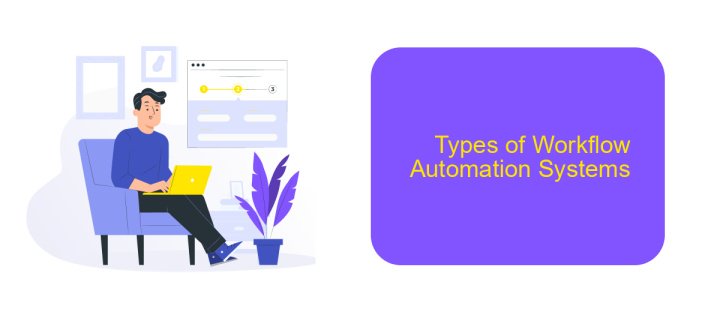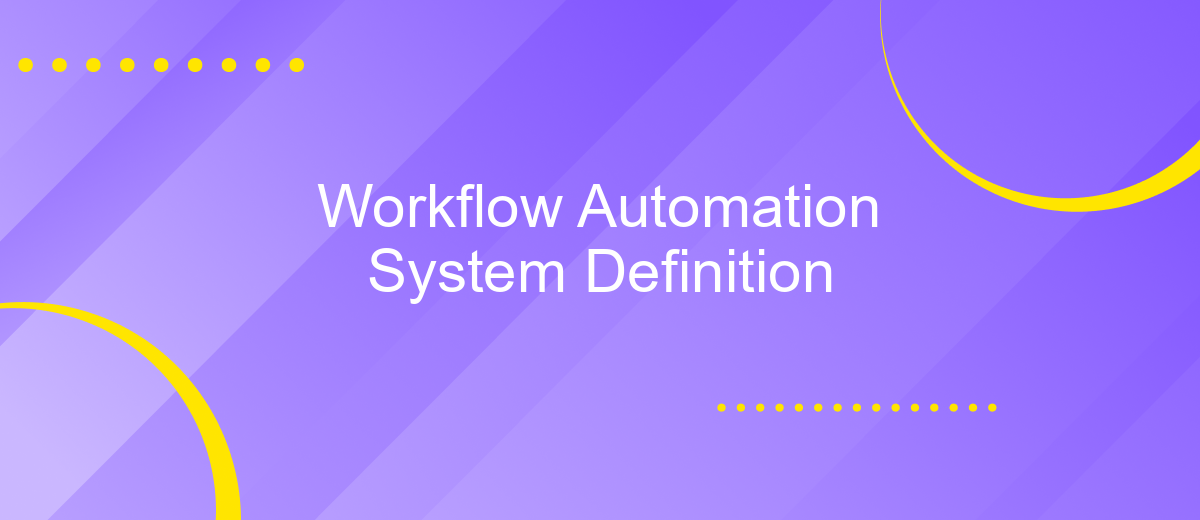Workflow Automation System Definition
A Workflow Automation System is a technology solution designed to streamline and automate complex business processes. By reducing manual intervention, these systems enhance efficiency, minimize errors, and ensure consistency in task execution. This article delves into the definition, key components, and benefits of implementing a Workflow Automation System in modern enterprises, highlighting its role in driving productivity and operational excellence.
Introduction
Workflow automation systems are designed to streamline and optimize business processes by automating routine tasks. These systems enable organizations to improve efficiency, reduce errors, and save time. By implementing a workflow automation system, businesses can focus on more strategic activities, leading to increased productivity and growth.
- Enhanced efficiency through automation of repetitive tasks
- Reduction of human errors and operational costs
- Improved compliance and audit trails
- Seamless integration with existing tools and systems
One of the key components of a successful workflow automation system is its ability to integrate with various applications and services. Tools like ApiX-Drive facilitate these integrations by allowing users to connect different software solutions effortlessly. This ensures that data flows smoothly between systems, enhancing overall operational efficiency. As businesses continue to evolve, the adoption of workflow automation systems becomes increasingly crucial for maintaining a competitive edge.
What is a Workflow Automation System?

A Workflow Automation System is a software solution designed to streamline and automate repetitive tasks and processes within an organization. By leveraging predefined rules and conditions, these systems can execute tasks, send notifications, and manage data without the need for human intervention. This not only enhances efficiency but also reduces the risk of errors, ensuring that operations run smoothly and consistently. Such systems are invaluable in various industries, from finance to healthcare, where precision and reliability are paramount.
Integration capabilities are a key feature of Workflow Automation Systems, allowing them to connect with other software and services to ensure seamless data flow and process management. For instance, ApiX-Drive is a powerful tool that facilitates the integration of various applications, enabling businesses to automate workflows across different platforms effortlessly. By using ApiX-Drive, organizations can set up integrations quickly, ensuring that their workflow automation system operates in harmony with their existing tools and services, thereby maximizing productivity and efficiency.
Benefits of Workflow Automation Systems

Implementing workflow automation systems can significantly enhance the efficiency and productivity of any organization. By automating repetitive tasks, these systems allow employees to focus on more strategic activities, leading to improved overall performance.
- Increased Efficiency: Automation minimizes human errors and accelerates task completion, resulting in a more streamlined workflow.
- Cost Savings: By reducing the need for manual intervention, businesses can lower labor costs and allocate resources more effectively.
- Enhanced Collaboration: Workflow automation systems facilitate better communication and coordination among team members, ensuring that everyone is on the same page.
- Data Accuracy: Automated processes ensure data consistency and accuracy, which is crucial for making informed decisions.
- Integration Capabilities: Tools like ApiX-Drive simplify the integration of various applications, enabling seamless data flow across different platforms.
Overall, the adoption of workflow automation systems can lead to a more agile and responsive organization. By leveraging these technologies, companies can stay competitive in a rapidly changing business environment.
Types of Workflow Automation Systems

Workflow automation systems come in various forms, each designed to streamline specific business processes. These systems can significantly enhance efficiency by automating repetitive tasks, allowing employees to focus on more strategic activities. Understanding the different types of workflow automation systems can help organizations choose the right solution for their needs.
One common type is the document-centric workflow system, which automates the creation, review, and approval of documents. Another type is the integration-centric workflow system, which focuses on connecting different software applications to ensure seamless data flow. Additionally, human-centric workflow systems are designed to facilitate human interaction and collaboration within business processes.
- Document-Centric Workflow Systems
- Integration-Centric Workflow Systems
- Human-Centric Workflow Systems
Integration-centric workflow systems, such as those supported by services like ApiX-Drive, are particularly useful for businesses that rely on multiple software platforms. ApiX-Drive helps set up integrations between various applications, ensuring that data is automatically transferred and processes are executed without manual intervention. By leveraging such systems, organizations can achieve higher efficiency and reduce the potential for human error.
Conclusion
In conclusion, a Workflow Automation System serves as a pivotal tool for enhancing operational efficiency and reducing manual intervention in business processes. By defining clear workflows and automating repetitive tasks, organizations can significantly improve accuracy, speed, and overall productivity. The implementation of such a system not only streamlines operations but also allows employees to focus on more strategic and creative tasks, ultimately fostering innovation and growth.
Moreover, integrating various applications and services is crucial for the seamless functioning of a Workflow Automation System. Tools like ApiX-Drive facilitate these integrations by providing a user-friendly platform to connect different software solutions without the need for extensive coding knowledge. This ensures that data flows smoothly across systems, further enhancing the effectiveness of the automation process. As businesses continue to evolve, adopting a robust Workflow Automation System will be essential for maintaining a competitive edge in the market.
FAQ
What is a Workflow Automation System?
How can a Workflow Automation System benefit my business?
What types of tasks can be automated with a Workflow Automation System?
How do I integrate different applications with my Workflow Automation System?
Is it difficult to set up a Workflow Automation System?
Apix-Drive is a universal tool that will quickly streamline any workflow, freeing you from routine and possible financial losses. Try ApiX-Drive in action and see how useful it is for you personally. In the meantime, when you are setting up connections between systems, think about where you are investing your free time, because now you will have much more of it.

